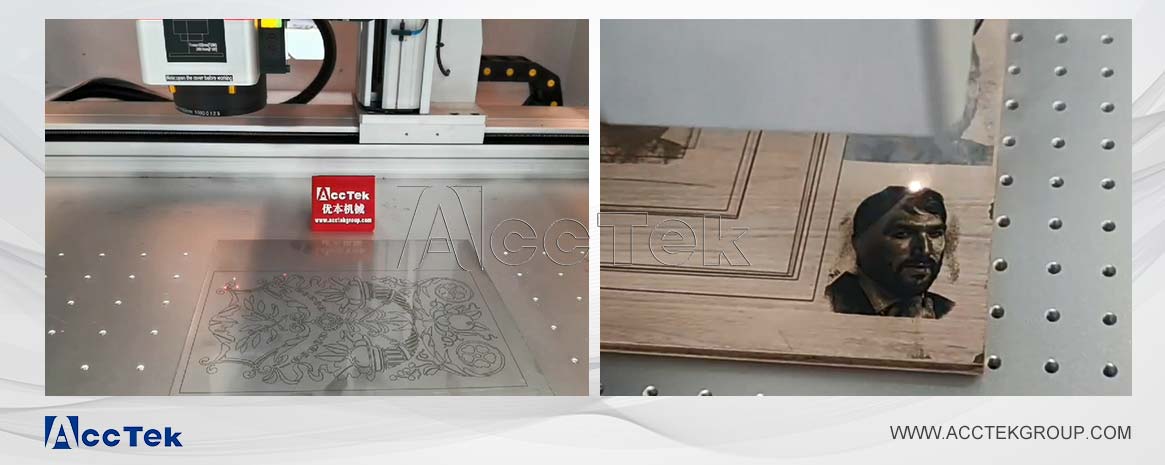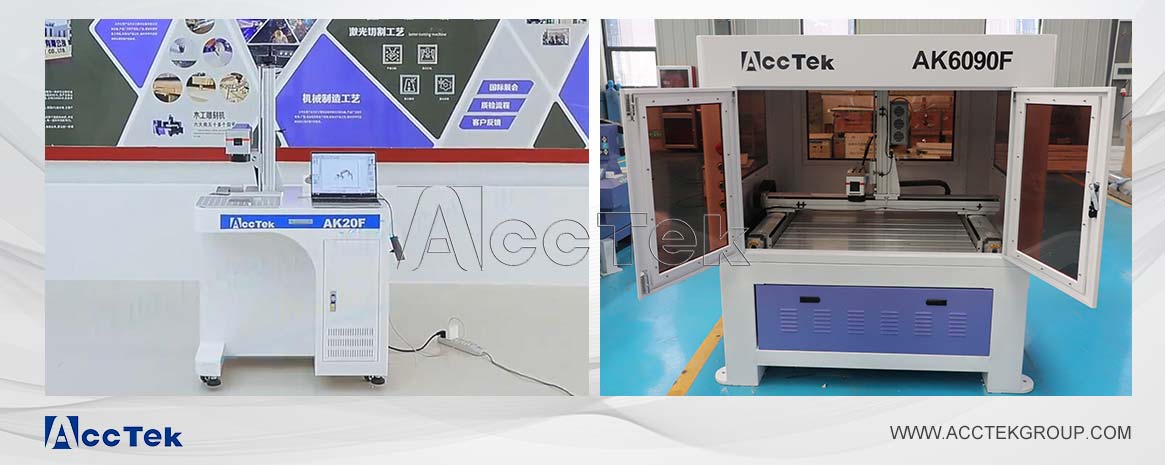What do I need to know when buying a laser marking machine?
![[field:title /]](https://www.acctekgroup.com/templets/youben/images/shijian.png)
![[field:title /]](https://www.acctekgroup.com/templets/youben/images/zuozhe.png)
![[field:title /]](https://www.acctekgroup.com/templets/youben/images/cishu.png)
This article will walk you through the key factors to consider when purchasing a laser marking machine, ensuring you make an informed decision and maximize your investment.
Laser marking machines have become an essential tool across a wide range of industries, providing precise, high-quality, and permanent marks on a wide range of materials. However, with numerous models and technologies available on the market, selecting the right laser marking machine for your needs can be challenging. Each machine offers unique advantages tailored to specific materials and applications, making it essential to match its capabilities with your production needs. This guide will walk you through the critical factors to consider, ensuring you make an informed decision that maximizes your investment.
Types of Laser Marking Machines
Different laser marking machines are designed to work with specific materials, offering unique advantages depending on the type of laser used. Understanding the materials you plan to work with helps you choose the correct laser type. Here are the main types of laser marking technologies and the materials they are most compatible with:
Fiber laser marking machines are known for their efficiency and precision, making them ideal for marking metals such as stainless steel, brass, aluminum, copper, and titanium, as well as alloys used in industrial settings. These machines excel in high-speed marking, offering deep engraving and high-contrast results on metal surfaces without damaging the material. Fiber lasers are also suitable for certain plastics like ABS and polycarbonate, making them a popular choice in industries such as electronics, automotive, and jewelry for marking serial numbers, barcodes, logos, and intricate designs.
CO₂ laser marking machines are better suited for non-metallic materials due to their longer wavelength. They work well with wood, leather, glass, ceramics, and textiles, making them ideal for decorative engraving and product customization. These machines are also effective in marking various plastics, paper, and cardboard, which makes them useful for packaging and craft industries. CO₂ lasers are commonly used in applications that require cutting and marking organic materials, such as engraving signs, personalizing gifts, or decorating glassware, due to their precision and ability to create smooth, clean cuts.
For more delicate and heat-sensitive materials, UV laser marking machines offer a unique advantage with their cold marking process. These machines are ideal for working with silicon, glass, ceramics, and sensitive plastics because they minimize heat damage and ensure precise marks. UV lasers are often used in the medical, pharmaceutical, and electronics industries to mark items like vials, syringes, and microchips. They are also effective for marking transparent materials and plastics without causing discoloration, making them indispensable in industries where aesthetics and readability are critical.
Finally, green laser marking machines are specifically designed to handle reflective materials like gold, silver, and copper with precision. Their visible wavelength allows for high-quality marks with minimal heat, preventing warping or distortion of the surface. Green lasers are also used to engrave glass and ceramics, creating detailed designs without cracking or damaging the material. These machines are commonly employed in the jewelry and luxury goods industries, where precision and intricate detail are paramount, as well as in applications requiring clear marks on reflective or polished surfaces.
Laser Power and Application
The power of the laser marking machine influences the machine's marking speed and depth. Higher laser power allows for faster marking and deeper engraving, while lower power is suitable for finer, more delicate applications.
Fiber lasers typically range from 20W to 100W or more. A 20W to 30W fiber laser is suitable for marking small metal parts, engraving jewelry, and creating high-contrast marks on plastics. On the other hand, 50W to 100W fiber lasers are ideal for deep engraving, large-scale production, and applications requiring higher speeds, such as automotive parts and tools.
CO₂ laser marking machines typically range between 30W and 150W, with higher power models excelling in marking and engraving thicker non-metal materials. A 30W to 60W CO₂ laser is well-suited for engraving wood, leather, and acrylics, while 100W to 150W models are more effective for cutting through thick materials like MDF, rubber, and textiles.
When working with UV or green lasers, power levels are generally lower, ranging between 3W and 10W, as these lasers are designed for delicate marking. These machines are perfect for marking glass, medical devices, and electronic components without causing heat damage or discoloration. Selecting the appropriate power level ensures optimal performance based on your application, balancing speed, quality, and cost efficiency.
Marking Area and Working Size
The marking area and working size of a laser marking machine determine the size of the objects it can accommodate and the area it can effectively mark in a single pass. Laser marking machines come with fixed or adjustable marking areas, typically ranging from 110mm x 110mm to 300mm x 300mm or larger. When selecting a machine, ensure the marking area aligns with the dimensions of your typical products to optimize efficiency and quality.
For applications requiring small, precise marks—such as barcodes, serial numbers, or intricate designs on jewelry and tools—a compact marking area like 110mm x 110mm ensures high accuracy and precision. Smaller areas are also beneficial when marking individual components, as they provide better control over fine details.
Larger marking areas, such as 200mm x 200mm or 300mm x 300mm, are more suitable for industrial applications that involve marking bigger objects or multiple parts in a single run, such as automotive components, panels, or signage. However, as the marking area increases, the precision may decrease slightly due to beam divergence, so it's crucial to find the right balance between working size and accuracy based on your production needs.
Cost Considerations
The cost of a laser marking machine can vary widely depending on the type of laser, power level, brand, and additional features, making it essential to assess both initial investment and long-term operational expenses.
Fiber laser marking machines generally cost between $2,000 to $3,000 for entry-level models, while high-end industrial versions with advanced software and automation can exceed $10,000. These machines, known for their durability and low maintenance, offer excellent long-term value, especially for applications that involve metals or high-volume production. CO₂ laser marking machines are typically priced between $2,500 and $4,500, with more powerful or customized models reaching up to $30,000. UV and green laser marking machines are at the higher end of the price spectrum.
In addition to the machine’s price, other financial considerations include installation, training, and accessories such as rotary attachments, cooling systems, or protective enclosures. Operational costs like electricity consumption, maintenance, and consumables (e.g., replacement lenses or filters) also impact the total cost of ownership. While more affordable machines may seem attractive upfront, investing in a higher-quality machine with reliable after-sales support and a longer lifespan can result in better productivity and reduced downtime, ultimately offering a more favorable return on investment (ROI) over time.
Choosing the right laser marking machine requires careful evaluation of several key factors, including laser type, power, marking area, and overall cost. Understanding the materials you will work with and the specific applications you plan to use the machine for will help guide your decision between fiber, CO₂, UV, or green laser systems. While initial costs are important, it’s equally crucial to factor in long-term operational expenses, maintenance needs, and after-sales support to maximize your investment. By weighing these considerations, you can confidently select a machine that enhances productivity, delivers consistent results, and supports the future growth of your business.
Product Directory
Copyright © Jinan AccTek Machinery Co.,Ltd


